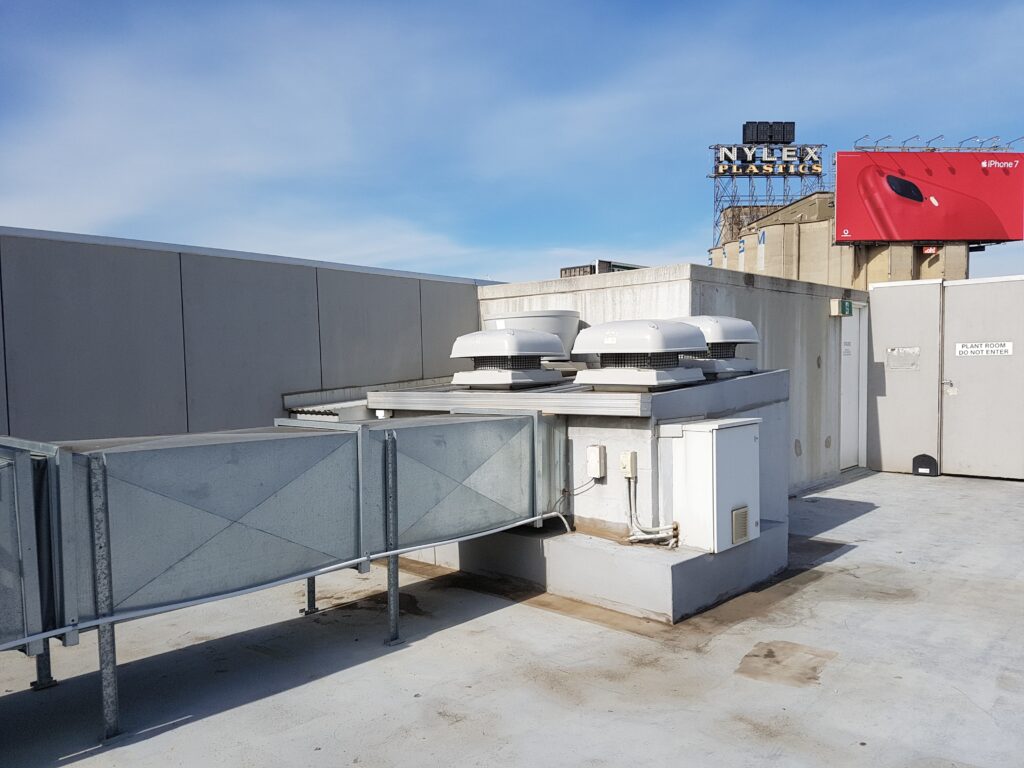Regular air monitoring in commercial spaces—ranging from bustling corporate offices to high-activity manufacturing plants—is critical for safeguarding the health of employees and maintaining operational efficiency.
Melbourne’s evolving environmental landscape, industrial activities, and seasonal air pollution underscore the importance of proactive air quality management. By continually assessing indoor air conditions, businesses can create healthier, more productive workplaces while ensuring compliance with Australia’s air quality standards.
Enhanced Employee Health and Productivity
Reduced Illness: Poor indoor air quality can lead to respiratory problems, allergic reactions, fatigue, and long-term health risks. Monitoring systems detect harmful pollutants such as VOCs, PM2.5/PM10, CO₂, and formaldehyde—allowing timely interventions that result in fewer sick days.
Increased Cognitive Function: Studies reveal that high CO₂ levels and airborne contaminants significantly impair cognitive performance. Regular monitoring ensures optimal indoor air conditions, which in turn fosters better focus, decision-making, and workplace output.
Regulatory Compliance and Legal Protection
Adherence to National Standards: Melbourne businesses are legally required to meet air quality benchmarks as defined by Safe Work Australia’s Workplace Exposure Limits (WEL), replacing older standards by December 2026. Continuous air monitoring supports this compliance and avoids costly fines or litigation.
Risk Identification & Mitigation: Monitoring helps detect occupational hazards early—such as silica dust, diesel fumes, or chemical vapors—ensuring risks are managed before they affect employee health.
Improved Workplace Morale and Company Reputation
Healthier Workspaces: Clean air contributes to a more comfortable, energizing, and pleasant environment. Employees are more likely to feel valued and motivated in a space that prioritizes their well-being.
Brand Image & Talent Retention: Companies with strong air quality policies are increasingly seen as socially responsible. They tend to attract and retain top-tier talent who value safety, sustainability, and health.
Understanding Key Pollutants in Commercial Environments
-
Volatile Organic Compounds (VOCs): Emitted from cleaning products, paints, and furniture, these can trigger eye, nose, and throat irritation.
-
Particulate Matter (PM2.5/PM10): Fine particles from dust and industrial processes can penetrate deep into the lungs and bloodstream.
-
Carbon Dioxide (CO₂): High CO₂ levels signal poor ventilation, causing drowsiness, poor decision-making, and discomfort.
-
Formaldehyde & Biological Contaminants: Linked to cancer and respiratory issues, often hidden in office materials and poor ventilation areas.
Smart Technology & Real-Time Monitoring
Modern air quality monitoring systems are powered by advanced IoT solutions that provide:
-
Real-Time Alerts: Enabling immediate response to pollution spikes.
-
Data Integration: Seamless reporting with building management systems and HVAC units.
-
Energy Efficiency: Dynamic control of ventilation systems reduces energy waste while maintaining air quality.
Case Studies
TechCorp Office, Melbourne CBD
Issue: Employees reported fatigue, eye irritation, and frequent absenteeism.
Solution: Installed smart air quality monitors in high-density zones.
Outcome: Reduced indoor CO₂ levels and VOCs led to a 20% boost in productivity and a noticeable drop in sick leave requests.
Eastside Manufacturing Facility
Issue: Dust and vapor exposure posed ongoing health risks.
Solution: Continuous particulate monitoring combined with localized ventilation upgrades.
Outcome: Recorded a 35% improvement in reported worker health and a decline in compensation claims.
Regulatory Insights for Melbourne Businesses
-
Workplace Exposure Limits (WEL): New thresholds for airborne contaminants come into full effect by December 2026. Businesses must ensure air samples are collected within workers’ breathing zones.
-
Legal Duty of PCBUs: Employers (PCBUs) must assess air quality risks—including bushfire smoke or tunnel emissions—consult staff, and take control actions like engineering upgrades or providing respirators.
Real-Life Incidents That Reinforce the Need
-
Southern Cross Station, VIC: Rail workers threatened shutdown over toxic diesel fumes. Monitoring and ventilation reforms were initiated.
-
Sydney Metro Construction: Workers were exposed to silica levels up to 208x the safe limit—leading to urgent calls for mandatory air monitoring in all major projects.
Conclusion
Investing in regular air monitoring is not just a health strategy—it’s a business strategy. From regulatory compliance and energy efficiency to talent retention and operational gains, indoor air quality management is essential in Melbourne’s commercial landscape. By adopting advanced monitoring systems and proactive policies, businesses can ensure the well-being of their teams, meet legal standards, and build a reputation of care and professionalism.

